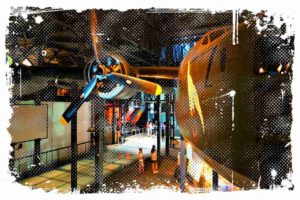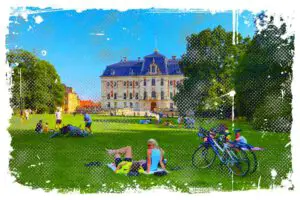If you’re planning to explore Poland by train, you might find the whole process a bit overwhelming. With multiple carriers, numerous promotions, and countless timetable pages, it’s easy to get lost. But don’t worry! I’ve gathered all the essential information you need to navigate Poland’s train network like a pro.

Navigating Poland’s Train Timetable
Let me say that train timetables in Poland, similar to most European countries, change yearly – usually in December. Throughout the year, some adjustments are announced, and due to track works, trains on specific routes may change their running times multiple times. I know it can be a bit confusing for travelers, but I’ve got your back.
You may also like to read this article: Exploring Poland Through Its Rivers: Why River Cruises Are a Must
Where to Check Train Timetables
I think the best place to check the train timetable in Poland is the Passenger’s Portal website, managed by PKP Polskie Linie Kolejowe. You can also find station timetables in poster form on the site.
↳ PRO TIP: Do you like traveling? Then before you buy any ticket or book an attraction, check if it's available in this worldwide Viator Database. You may save a lot of money and time. No need to thank me :)
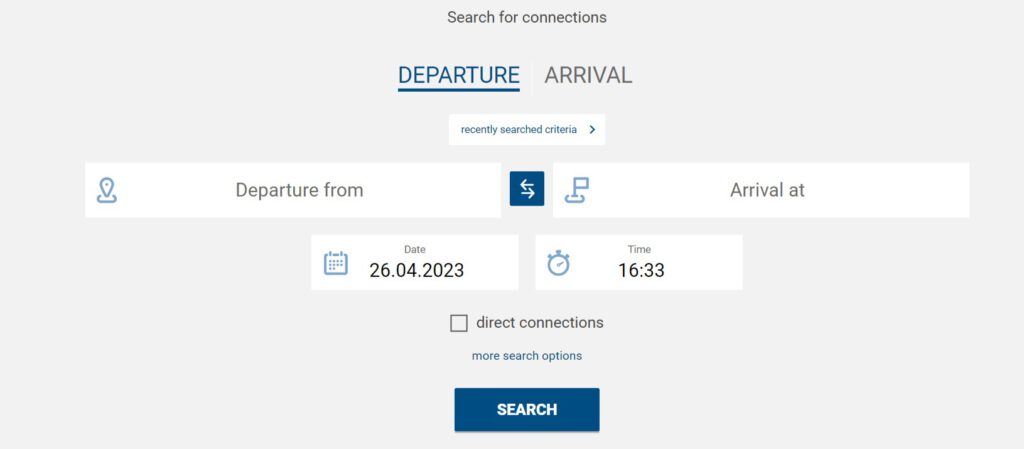
Other websites to check train schedules and buy tickets:
- rozklad.pkp.pl – PKP’s official timetable website
- beta.bilkom.pl – timetable by PKP Informatyka
- rozklad.sitkol.pl – an older connection search engine, popular among railway enthusiasts
- koleo.pl – the most popular railway ticket sales intermediary in Poland
I am convinced that these websites provide reliable information, but it’s worth double-checking connections with transfers. Sometimes, search engines show connections with at least 5 minutes to change, but in reality it may not be enough. You can tweak the search engine settings or search for individual episodes separately.
A Word on Regional Train Schedules
The websites called bocznica.eu (a Polish copy of a Czech site), publish lists of fast and regional trains. However, I don’t recommend relying on them because of frequent changes. If you want regional train schedules, PKP Intercity provides listings of the trains it operates. Check them out at www.intercity.pl.
Handling Replacement Bus Services
Replacement bus services can be a traveler’s nightmare. Line closures can be planned or unplanned, with planned closures usually showing up when searching for connections. PKP Intercity provides relevant information on its website: www.intercity.pl. Replacement bus services from other carriers should appear in search engines as an icon or message.
Dealing with Train Delays
If you experience a train delay, regardless of the reason, notify the train manager. The second train might not always wait, and there could be problems on PKP Intercity trains.
For instance, I once traveled from Katowice to Warsaw, where I was supposed to change trains to Białystok. Due to a 50-minute delay, I missed my connection by 2 minutes. I eventually boarded the next train, but the train manager didn’t want to recognize my ticket because I had a seat reservation for the earlier train.
There was no note from the previous conductor, and my explanations about the missed connection were of no use. The train manger had to spend 15 minutes verifying everything before allowing me to stay on the train.
I believe it’s important to know that you’re entitled to compensation for delays of more than 60 minutes on long-distance trains caused by the carrier. Detailed regulations and procedures are available on the Office of Rail Transport’s website.
You can submit a complaint through a special form on the PKP Intercity website. However, be aware that responses from PKP Intercity can sometimes be disrespectful and arrogant. In such cases, it’s best to notify the Office of Rail Transport.
Know Your Rights for Compensation
Train delays longer than 60 minutes may entitle passengers to compensation, regardless of the train type. Different rules apply for compensation from EU regulation and Polish national provisions.
EU Regulation Compensation: According to the European Parliament and Council Regulation (EC) No. 1371/2007, the minimum compensation for train delays is:
- 25% of a single ticket price for delays between 60 and 119 minutes
- 50% of a single ticket price for delays of 120 minutes or more
This compensation applies to domestic long-distance trains (Express Intercity Premium, Express InterCity, InterCity, Moje Linie Kolejowe, interREGIO) and international journeys between EU countries. Urban, suburban, and regional trains in Poland are exempt. The minimum threshold for compensation is 4,00 EUR.
Polish National Provisions: Passengers of all train categories can file a complaint for train delays and seek compensation based on general provisions of the Civil Code and the Act – Transport Law. So, as you can see, here it is much worse. Why? Because compensation depends on the proven loss resulting from your train delay. Carriers may be exempt from liability if the delay was due to extraordinary events beyond their control, and you get nothing.
Passengers can file a complaint to the carrier, go to court after exhausting the complaint procedure, or submit a complaint to the Office of Rail Transport. However, good information is that compensation from EU regulation does not exclude seeking compensation based on Polish national provisions.
Railway Carriers in Poland
Now let’s talk about the companies in the railroad business. Poland has over a dozen carriers operating scheduled passenger trains. Here is a list of some of the most notable carriers:
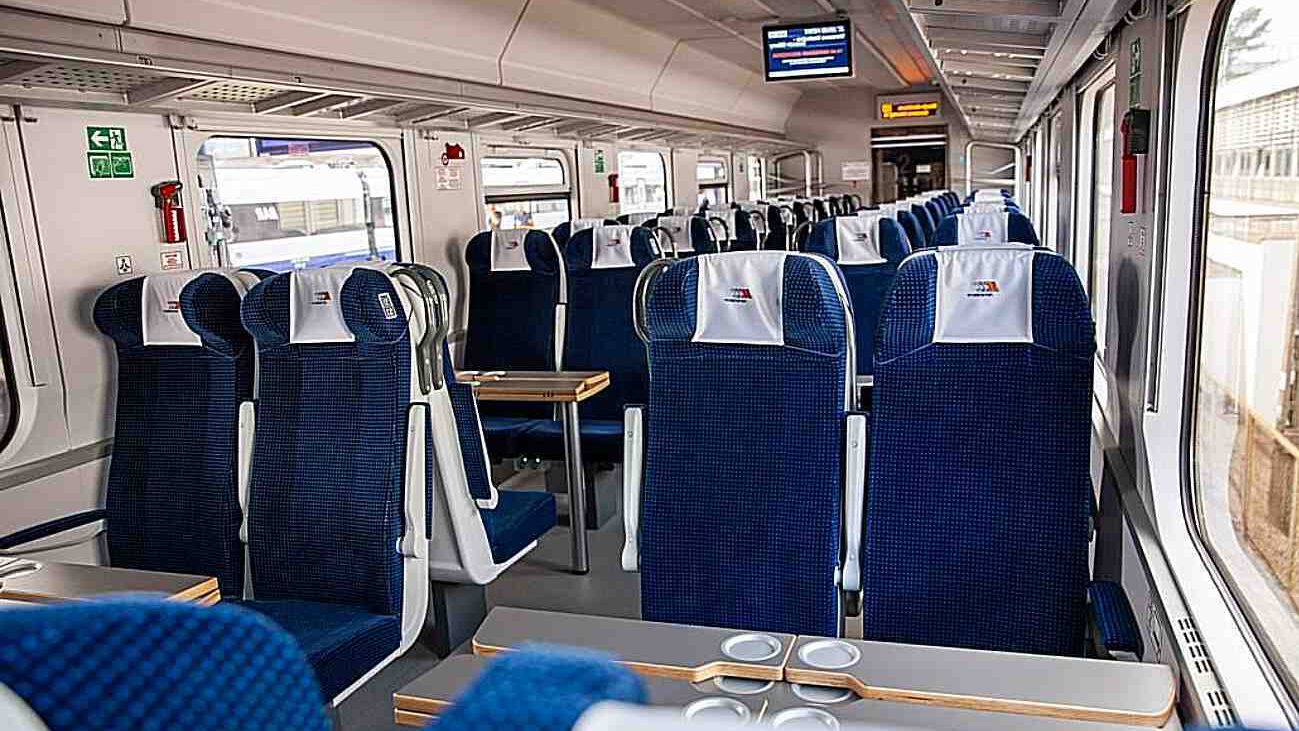
- PKP Intercity – Offers long-distance domestic and international connections, including fast trains, Intercity, EIC, and EIP. PKP Intercity trains typically stop only at major railway stations. Website: www.intercity.pl
- Polregio – Once the largest regional carrier, Polregio has been losing importance due to the expansion of local government carriers. They operate REGIO, interREGIO, and commercial SuperREGIO trains. Website: www.polregio.pl
- Koleje Mazowieckie – A local government carrier serving regional connections in the Mazowieckie Voivodeship. Operates seasonal commercial trains to the sea during non-pandemic times. Website: www.mazowieckie.com.pl
- Koleje Dolnośląskie – A local government carrier providing regional connections in the Dolnośląskie Voivodship and some aditional connections with neighboring voivodeships. Website: www.kolejedolnoslaskie.pl
- Koleje Wielkopolskie – A local government carrier serving regional connections in the Wielkopolskie Voivodeship. Website: Koleje-Wielkopolskie.com.pl
- Koleje Śląskie – A local government carrier operating regional connections in the Śląskie Voivodship and select interconnections with neighboring voivodeships. Website: Kolejeslaskie.com
- Łódzka Kolej Aglomeracyjna – A local government carrier serving regional connections in the Łódź Voivodeship. Also runs ŁKA Sprinter fast trains from Łódź to Warsaw. Website: lka.lodzkie.pl
- Koleje Małopolskie – A local government carrier operating trains on select railway lines in the Małopolskie Voivodeship. Runs several seasonal fast trains within the region on summer weekends. Website: malopolskiekoleje.pl
- Arriva RP – A carrier from the Arriva group (part of Deutsche Bahn) supporting connections in the Kuyavian-Pomeranian Voivodeship. Operates several commercial trains to the Baltic sea during the holidays. Website: arriva.pl
- Szybka Kolej Miejska (SKM) – Tri-City – A carrier from the PKP group, operating passenger trains in the Tri-City agglomeration, Pomeranian Metropolitan Railway lines, and passenger trains from Gdańsk Śródmieście to Lębork. Website: www.skm.pkp.pl
- Fast City Rail in Warsaw – A carrier servicing select rail connections in the Warsaw agglomeration area. Website: www.skm.warszawa.pl
- Warszawska Kolej Dojazdowa – A unique cross between a train and a tram, operating on the route Warszawa Centralna WKD – Grodzisk Mazowiecki Radońska. Website: www.wkd.com.pl
- SKPL Group – A carrier operating the Pleszew Miasto – Pleszew Wąskotorowy (Kowalew) connection, which was once a narrow-gauge connection but is now a standard-gauge connection. Until December 2019, it operated Rzeszów – Zagórz/Łupków trains on behalf of PKP Intercity. A few years ago, SKPL Group trains could be found on lines that are normally closed for passenger traffic during the holidays: Kętrzyn – Węgorzewo and Lipusz – Bytów. They also operate on several routes in Lower Silesia (as Koleje Dolnośląskie). Website: shortlines.pl
- We can also include Leo Express in this list. This carrier operates weekend trains from Kraków to Praga.
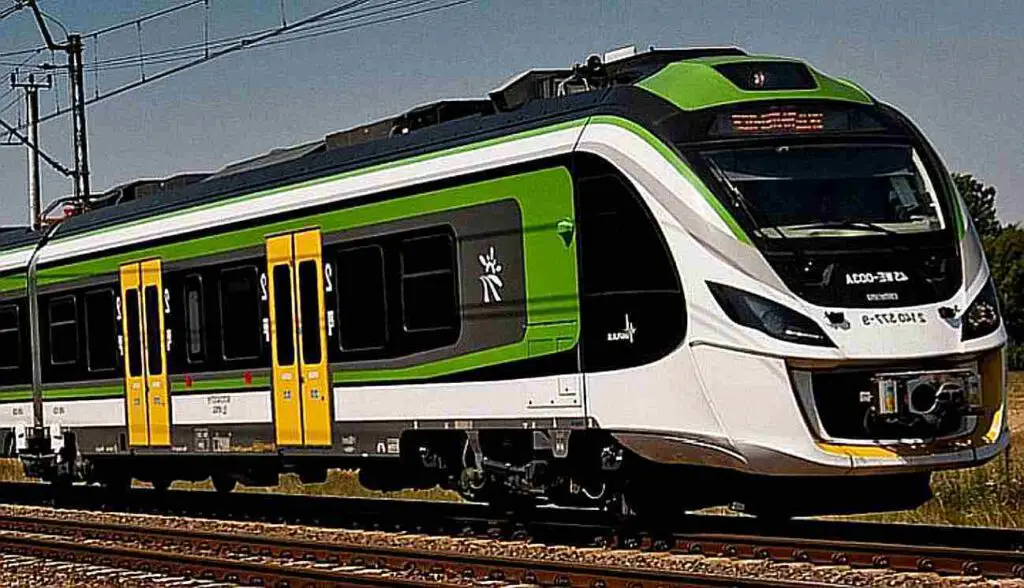
The variety of railway carriers in Poland provides passengers with numerous options for regional and long-distance travel.
Train Categories You Will Find in Poland
Polish train timetables feature several types of trains:
Passenger Trains (REGIO)
These trains stop at all passenger stations and are predominantly operated by Przewozy Regionalne. They may be referred to as REGIO trains and are also used by other carriers. Passenger trains can be found with the following abbreviations:
- R – REGIO train by Przewozy Regionalne
- KM – Koleje Mazowieckie train
- KMŁ – Koleje Małopolskie
- KŚ train – Koleje Śląskie
- KD – Koleje Dolnośląskie train
- KW – Koleje Wielkopolskie train
- ŁKA – train of Łódzka Kolej Aglomeracyjna
- AR – train of Arriva RP
interREGIO
Fast trains operated by Przewozy Regionalne, primarily serving students during weekends.
TLK (Twoje Linie Kolejowe)
Fast trains operated by PKP Intercity, composed of older, non-modernized wagons. Some TLK trains feature air-conditioned cars with sockets and closed-circuit toilets.
IC (Intercity)
Fast trains operated by PKP Intercity, with modernized wagons or electric multiple units. These trains have air-conditioned first and second-class cars, often with a bar or restaurant.
EIC (Express Intercity)
Comfortable trains running between major cities, with modernized or new, air-conditioned first and second-class cars. Passengers receive a small snack, and management compartments are available on some trains.
EIP (Express Intercity Premium)
The highest and most expensive category of trains, served by ED250 vehicles, also known as „Polish Pendolino”. EIP trains have first and second-class cars, a restaurant car, and a Quiet Zone.
D
International night trains going to Eastern European countries, composed of older, non-modernized wagons.
EN (Euronight)
International night trains going to Western and Central European countries.
Nightjet
Berlin-Vienna night train traveling through Poland, operated by Austrian Railways, with air-conditioned seated cars, couchette cars, and sleeping cars.
Sleeping Cars and Couchettes
Some PKP Intercity night trains have couchette cars and sleeping cars. Couchette cars have six-person compartments, while sleeping cars have separate compartments for men and women. Bedding, mineral water, and small refreshments are provided in sleeping cars. Traveling in a sleeping car or couchette car allows for a more comfortable journey, especially for overnight trips.
Polish Railway Stations
Let me say that Polish railway stations have come a long way in the past decade. Many of them have been renovated, and I think they now look pretty good compared to other European stations. They have also become more accessible for people with disabilities, and some even have additional amenities like showers. However, there are still quite a few smaller city stations that need a facelift.
The Three Main Trends in Station Modernization
I am convinced that there are three primary approaches to modernization of Polish railway stations. The first one involves restoring historic buildings to their former glory, which includes conservation work. Examples of such stations include Bielsko-Biała Główna, Gdynia Główny, and Wrocław Główny.
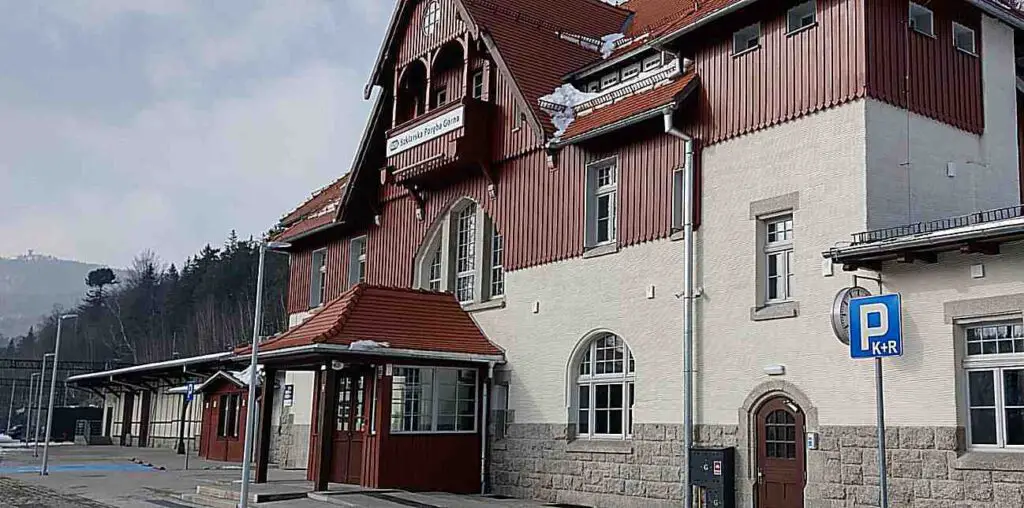
The second trend is to incorporate railway stations into shopping malls. If you need some retail therapy or a quick bite, these stations have got you covered. They usually sit right next to a huge shopping mall or have one nearby. However, I believe these stations often lack a classic waiting room for travelers. A great example of this type of station is the railway station in Katowice.
The last trend, known as „system stations”, features small booths built according to a single design for the entire country. These stations are divided into two parts: one houses a ticket office and a security counter, while the other has a toilet, waiting room, possibly a retail and service point, and a vending machine with snacks.
Who Manages the Stations and What’s Changed?
Most railway stations are managed by PKP, but more and more buildings are being taken over by local governments. They have successfully modernized the stations, which now also serve as libraries, offices, and other institutions. A notable example is the renovation of Goczałkowice-Zdrój station by the local government.
More and more stations are becoming accessible to people with disabilities, with the installation of lifts and signs for the blind. Toilets at train stations are increasingly free of charge, but at some larger facilities, fees can range from PLN 2 to PLN 4. At the most important railway stations, you can find a family room equipped with a changing table and a shower.
Security guards work at most stations, from smaller ones with retired guards to larger ones with professional security companies. Taking photos at stations is generally not a problem, but some people are still unaware that the ban on photography has been lifted.
The most important stations are open 24 hours a day, but smaller ones often close in the afternoon. If you want a safe place to wait for a train at night, consider stations like Warszawa Centralna, Warszawa Zachodnia, Kraków Główny, Przemyśl Główny, Gdynia Główna, and Wrocław Główny.
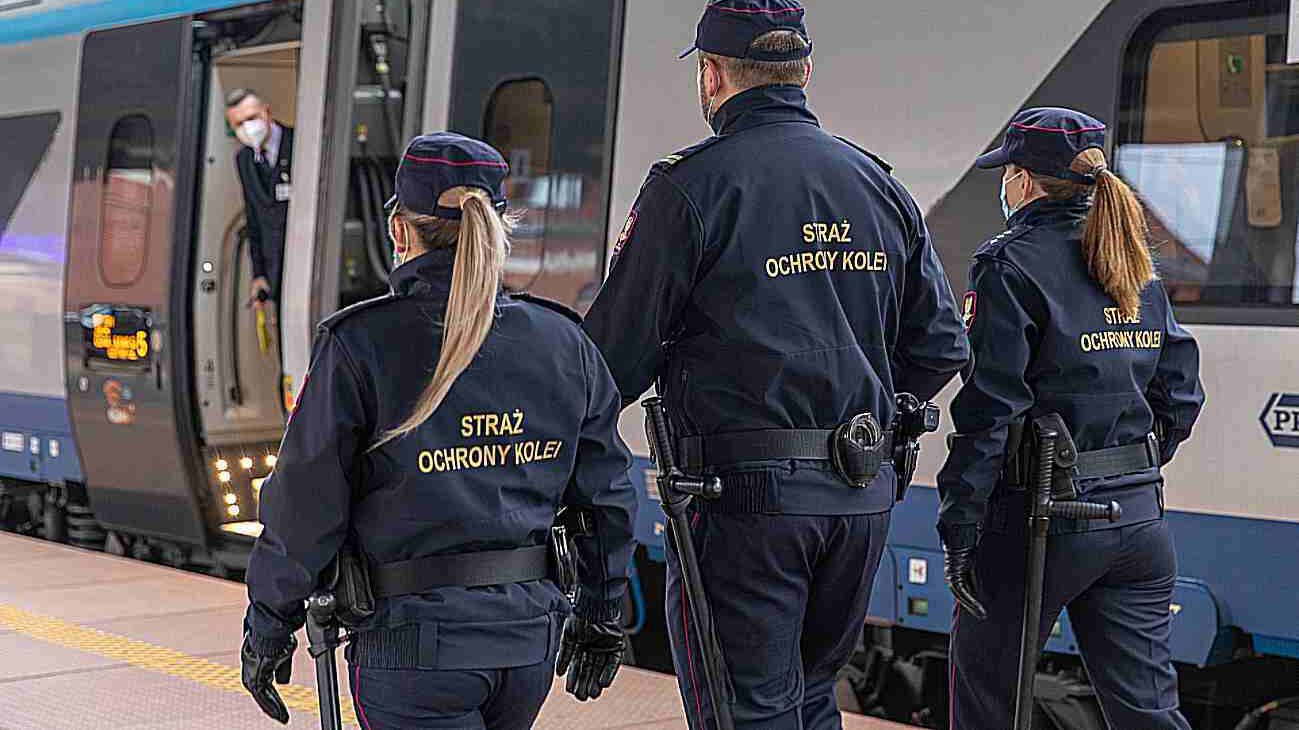
Traditional luggage storage facilities are becoming scarce at most stations, replaced by luggage boxes available in various sizes. However, it’s worth mentioning that not all stations have ticket machines for every carrier, leading to long queues at ticket offices despite the „one queue system”.
Map of Train Connections in Poland
Here is the map of railroad and main cities. In order to use this map, use the link in the image description
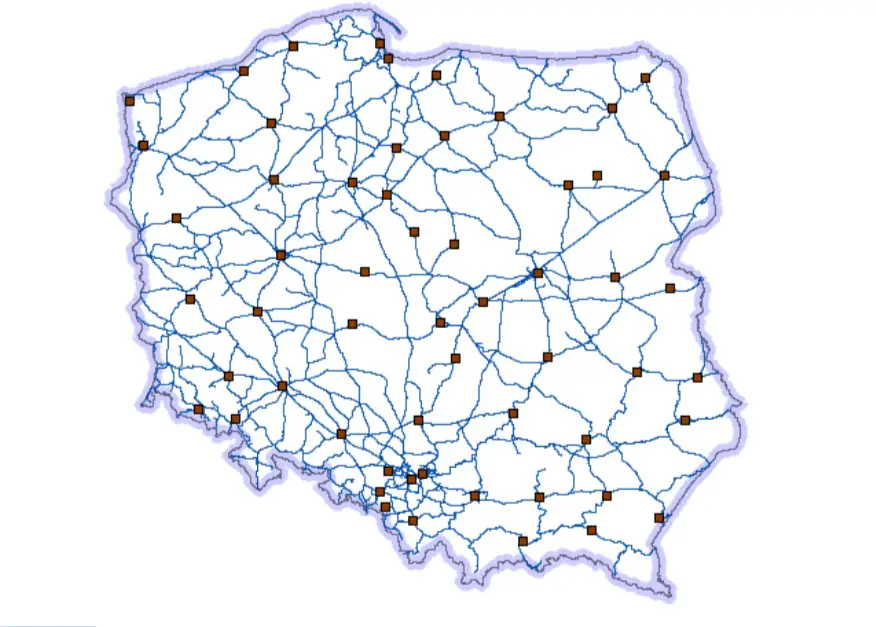
Safety on Polish Trains
I published a blog post about Safety on Trains. I know you may be scared after reading this article, but things get improving. Nevertheless, you must remain vigilant against pickpocketing and gangs of thieves who target sleeping passengers. Pickpockets are active on crowded trains, while gangs typically operate on night trains.
So What Has Improved?
I am sure that safety on trains has gotten better. Selected PKP Intercity night trains are now patrolled by security companies along their entire route, whereas in the past, there were gaps in security coverage between certain stations. Additionally, more and more storage areas are monitored, making it easier for the police to track down thieves.
Unfortunately, it is impossible to eliminate all risks, so it is essential to follow basic safety rules while traveling. Always be aware of your surroundings because you never know who you might encounter.
The situation at stations has improved, but some still struggle with issues like homeless people, beggars, and individuals with mental health challenges. Be particularly cautious of pickpockets at these stations.
In night trains, thefts have been reported mainly on the following sections:
- Various sections in the Śląskie Voivodeship
- Section Głogów – Zielona Góra
- Section Kielce – Radom
- Section Tczew – Bydgoszcz
Tourist Trains in Poland
I can bet you didn’t know that, but aside from the regularly scheduled trains operated by the carriers mentioned in the article, there are also tourist trains in Poland run by Turkol and the Nowy Sącz Association of Railway Enthusiasts as part of the „Małopolskie Szlaki Turystyki Kolejowej” project.
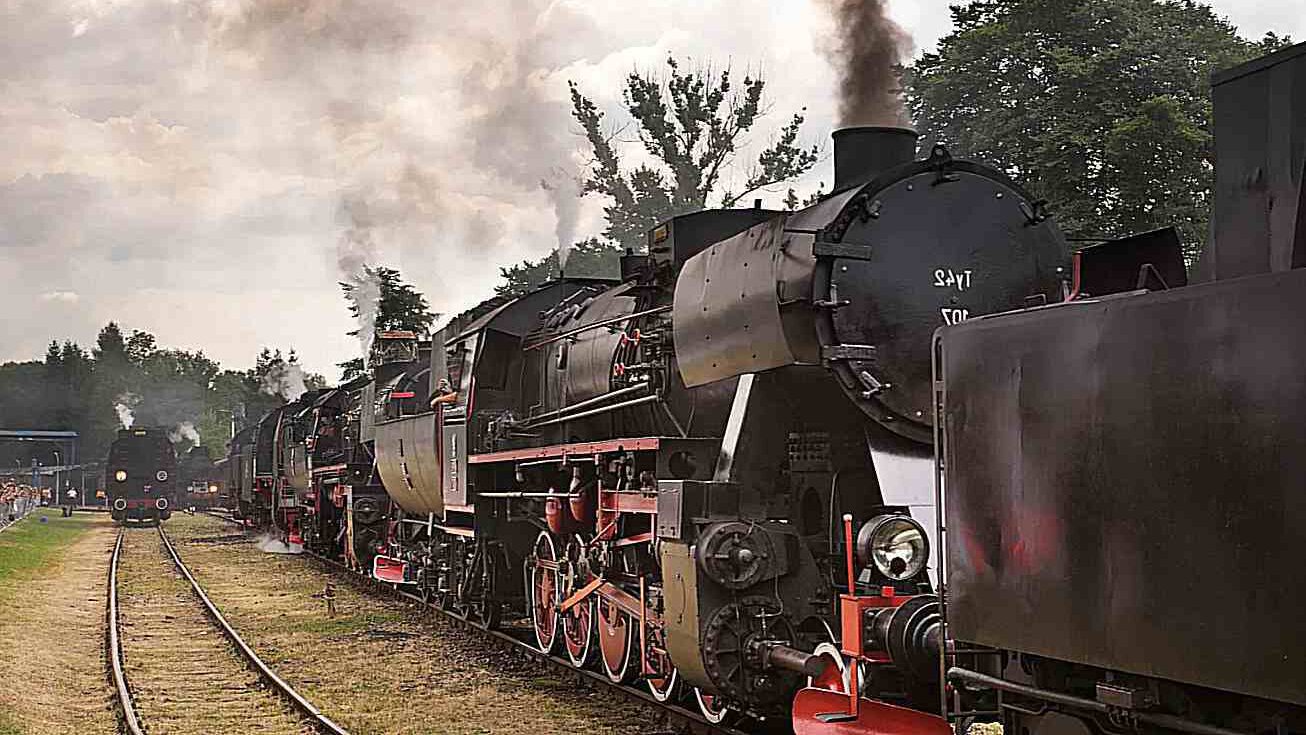
These tourist trains typically run on railway lines closed for passenger traffic, and usually consist of a steam or diesel locomotive with retro carriages. In cooperation with local tourist organizations, the organizers develop accompanying programs for these trips.
Tourist trains follow a fixed schedule and require mandatory seat reservations. In 90% of cases, tickets must be bought well in advance through the tour operator’s website. Despite the relatively high prices, tickets sell out quickly.
Tourist trips are organized by the following entities:
- TurKol organizes tourist train trips mainly in the Wielkopolskie Voivodship and neighboring regions. They also offer multi-day trips to various regions, but these are correspondingly more expensive. Website: www.turkol.pl
- Małopolskie Trails of Railway Tourism is a project implemented by the Nowy Sącz Association of Railway Enthusiasts, the Railway Open Air Museum in Chabówka, and PKP Cargo. The project offers journeys in the Lesser Poland Voivodeship, mainly on the picturesque railway lines Nowy Sącz – Muszyna, Tarnów – Żabno, and Tarnów – Tuchów. From 2022 onwards, due to the construction of the Podłęże – Piekiełko line, the Nowy Sącz – Chabówka trains will no longer operate. Website: Kolejegalicyjskie.pl
Occasionally, international tourist trains catering to wealthy travelers pass through Poland, such as the Courier Classic or the Venice Simplon Orient Express.
Holiday Trains
During the holiday season, several interesting additional trains are launched to popular tourist destinations, often on railway lines where trains do not run during the off-season. These trains supplement long-distance connections from the north to the south of Poland and vice versa.
Examples include:
- Koszalin – Mielno: A rail bus providing easy access to the popular seaside resort.
- Chełm – Włodawa: A holiday connection that has been operating for several years. Unfortunately, the station in Włodawa is far from the city center, making it less attractive to tourists.
- Białystok – Waliły: Trains on this route run from May until the end of summer. Local governments and Przewozy Regionalne promote this connection as an opportunity to go mushroom picking by train.
In addition to reactivations, there are also two connections that garnered interest but were discontinued by the SKPL Group: Kętrzyn – Węgorzewo and Bytów – Lipusz. The potential of the Koleja Nadzalewowa from Elbląg to Frombork remains untapped.
The Most Beautiful Railway Lines
Poland is home to several railway lines that can be considered among the most beautiful in Central Europe, if not beyond. Unfortunately, two of them are currently closed for passenger trains, and only special trains run on one.
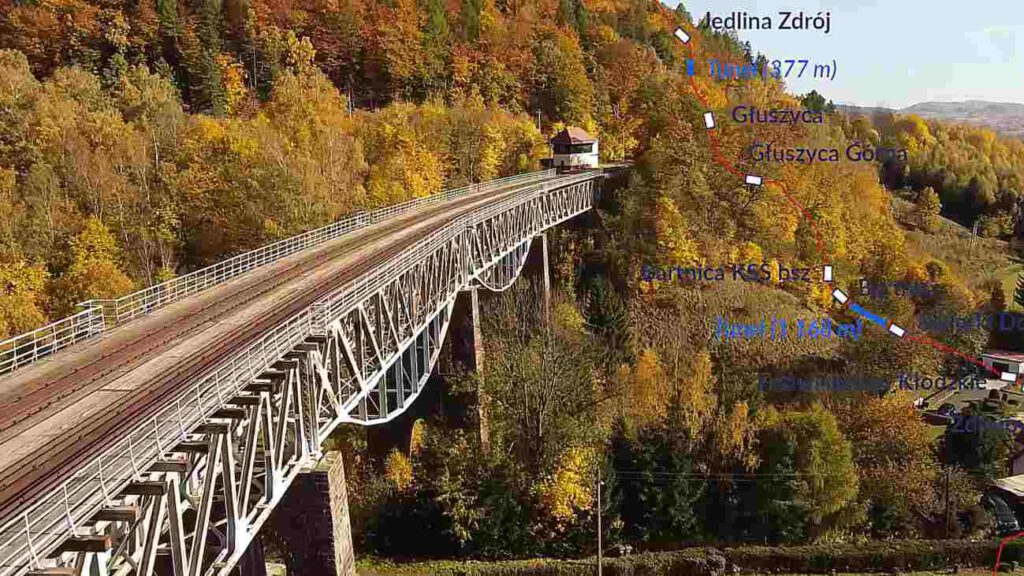
Some of these stunning lines include:
- Reda – Hel Railway Line: Built on a spit, this 62.8 km-long line offers breathtaking views of the Puck Bay and the sea. The most beautiful section of the line begins just after Puck. During the off-season, railbuses run on the Gdynia – Władysławowo and Gdynia – Hel lines. In the high season, additional fast trains from PKP Intercity are available. Trains can get crowded during the season, stopping at popular holiday destinations.
- Kłodzko Główny – Wałbrzych Główny Railway Line: A picturesque 52 km-long line in the Lower Silesian Voivodeship. The tracks run alongside hills and rivers, and the train passes through two long tunnels – Tunel pod Sajdak and Tunel pod Mały Wołowiec, the longest tunnel in Poland. Between Jedlina-Zdrój and Wałbrzych stations, the train crosses a viaduct offering a panorama of Wałbrzych. Koleje Dolnośląskie railbuses currently operate on this route.
- Tarnów – Muszyna – Leluchów Railway Line: A 145.48 km-long line running along the Poprad River for much of its route. With hills, river valleys, and the train occasionally running next to the road, this line offers stunning scenery. Some trains are served by old EN57 trains with opening windows, allowing for beautiful photos. Many interesting towns are located along the way, including Nowy Sącz and Stary Sącz, creating a unique atmosphere.
- Chabówka – Nowy Sącz Railway Line: A mountain railway line in the Lesser Poland Voivodeship, running through the Beskid Wyspowy. On the roughly 77 km-long route, the train crosses 74 bridges, with the longest one spanning over 300 meters and rising over the Dunajec just before Nowy Sącz Miasto station. Despite the mountainous terrain, no tunnels were built on the route, but 206 water culverts were constructed under the tracks. Currently, special trains run on the route only a few times a year, and tickets sell out quickly. In the future, plans include renovating the line and connecting it with the planned new Podłęże – Piekiełko line.
- Bóbr Valley Railway: A scenic railway line in the Lower Silesian Voivodeship, connecting Jelenia Góra and Lwówek Śląski. The most picturesque section is 33 km long, but the line actually extends to Ławszowa, totaling 77 km in length. On the Jelenia Góra – Lwówek Śląski section, the train travels through three tunnels and crosses four bridges and viaducts. Despite its landscape values, the line has deteriorated over the years, with trains’ speed dropping to 10 km/h. Trains have not operated on this line for several years, but there are talks of possibly reactivating passenger transport in the future.
- Kolej Nadzalewowa: A closed railway line connecting Elbląg with Braniewo (48 km). Some sections are located along the banks of the Vistula Lagoon, with popular towns like Tolkmicko and Frombork situated along the line. Despite its potential, the line fell into disrepair, and attempts to create a trolley railway on part of the route were unsuccessful. Due to the costs, it is unlikely that the line will be renovated in the near future.
- Zagórz – Krościenko Railway Line: Although passenger trains have not run on this line for years, it is said to be one of the most beautiful in Poland. Unfortunately, the opportunity to experience this line has yet to present itself.
- Tarnów – Krynica – Zdrój Railway Line: This railway line runs through the picturesque landscapes of Lesser Poland and offers stunning views of the surrounding hills and valleys. The line connects Tarnów with the popular spa town of Krynica-Zdrój, making it a popular choice for those seeking relaxation and rejuvenation. Along the way, passengers can enjoy the charming atmosphere of small towns and villages, each with its unique charm.
Funicular Railways in Poland
Poland is home to four funicular railways, with three situated in the south and one in Gdynia. These unique transportation systems offer scenic views and convenient access to popular destinations.
Funicular Railway to Góra Żar: Completed in late 2003, this 1,300-meter-long funicular railway connects passengers to Góra Żar. The 5.5-minute journey provides picturesque views from both the cable car and the mountaintop, making it popular among gliding and paragliding enthusiasts. The railway can transport 1,200 passengers per hour and accommodates bicycles and ski equipment.
Check more on the website: www.pkl.pl/gora-zar/gora-zar.html
Funicular Railway to Gubałówka: Built in 1938 and modernized in 2001, this 1,307-meter-long cable car takes passengers from Zakopane to Gubałówka. The 3.5-minute journey features a passing loop at the midway point and can transport 2,000 passengers per hour.
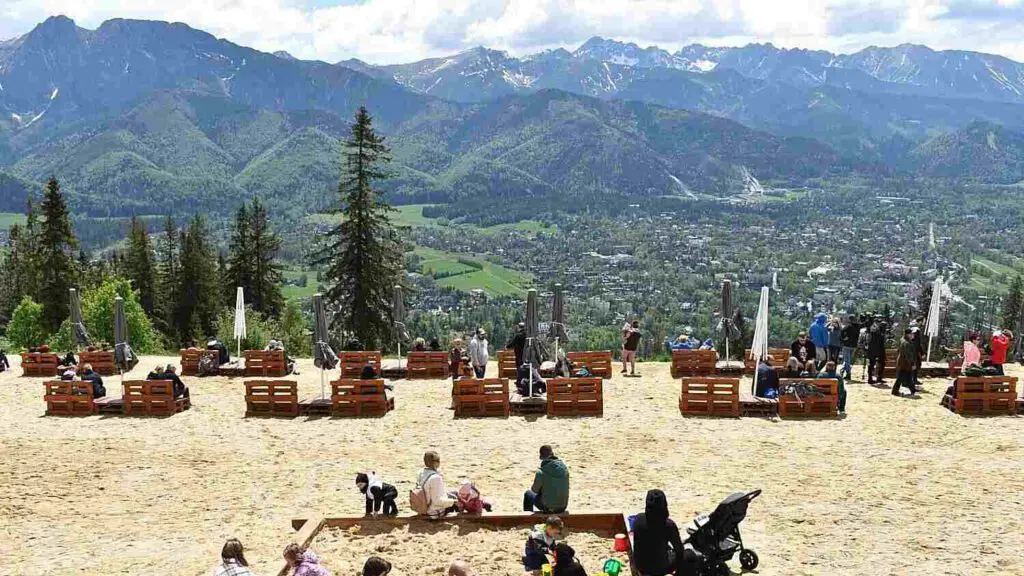
Funicular Railway to Góra Parkowa: As Poland’s first funicular railway, this 1937 construction in Krynica-Zdrój connects the promenade with Góra Parkowa. The 642-meter route has a 148-meter elevation change and includes a passing loop. The railway carries 500 passengers per hour, with each carriage holding 50 people. The journey takes approximately 3 minutes, and the railway operates daily from 10:00 to 19:00.
Funicular Railway to Kamienna Góra: Inaugurated in 2005, this Gdynia-based funicular railway transports passengers from Plac Grunwaldzki to Kamienna Góra. The 96-meter route takes just 2 minutes to complete, providing quick access to this popular destination.
Funicular railways in Poland not only offer unique travel experiences but also grant convenient access to various attractions. Their scenic routes and historic significance make them must-see attractions for visitors and locals alike.
References:
- https://portalpasazera.pl/
- https://utk.gov.pl/
- http://mapa.plk-sa.pl/
- https://www.bazakolejowa.pl/index.php
- https://siskom.waw.pl/kp-kolej-polska.htm

